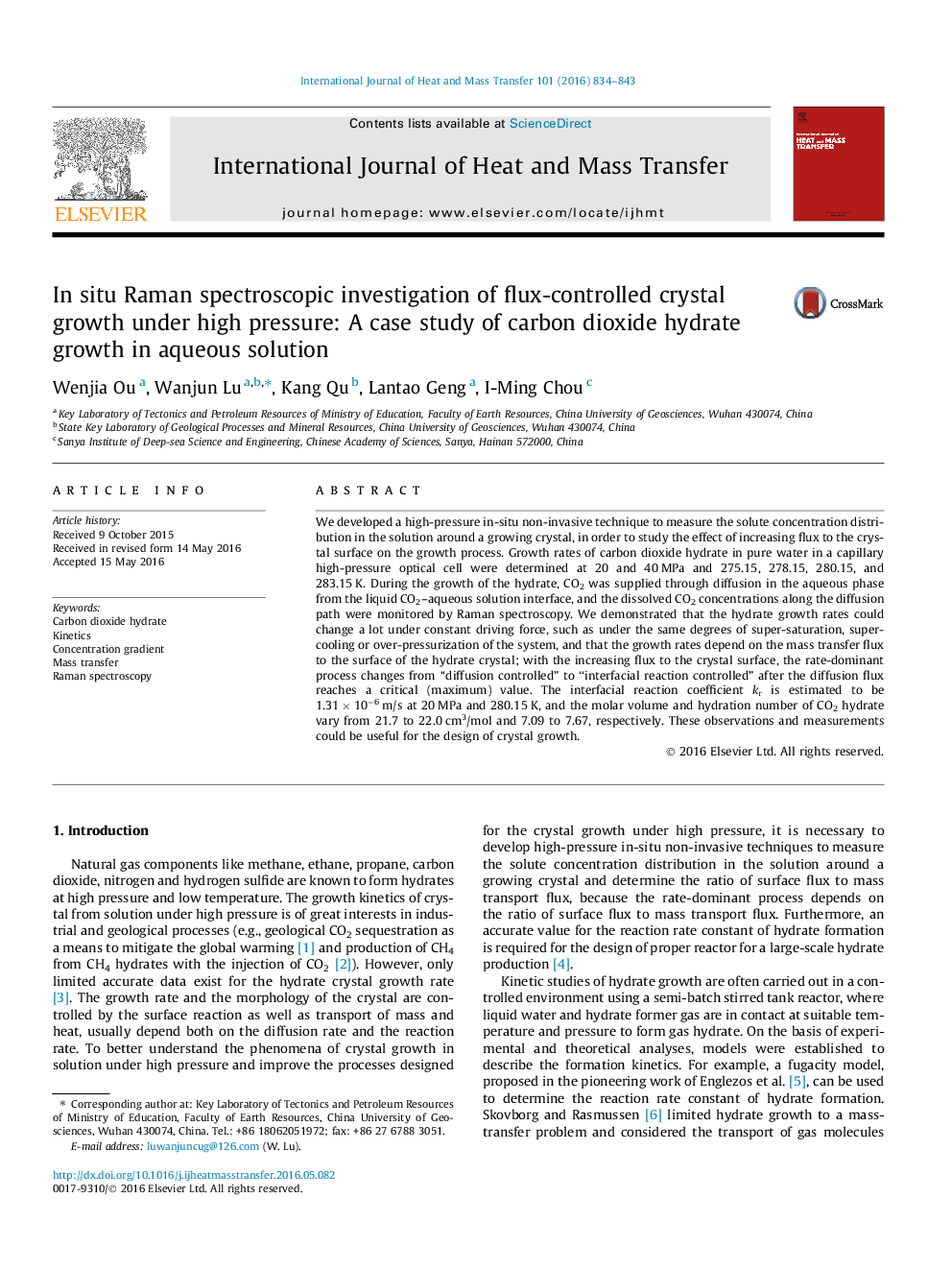| Article ID | Journal | Published Year | Pages | File Type |
|---|---|---|---|---|
| 7055395 | International Journal of Heat and Mass Transfer | 2016 | 10 Pages |
Abstract
We developed a high-pressure in-situ non-invasive technique to measure the solute concentration distribution in the solution around a growing crystal, in order to study the effect of increasing flux to the crystal surface on the growth process. Growth rates of carbon dioxide hydrate in pure water in a capillary high-pressure optical cell were determined at 20 and 40Â MPa and 275.15, 278.15, 280.15, and 283.15Â K. During the growth of the hydrate, CO2 was supplied through diffusion in the aqueous phase from the liquid CO2-aqueous solution interface, and the dissolved CO2 concentrations along the diffusion path were monitored by Raman spectroscopy. We demonstrated that the hydrate growth rates could change a lot under constant driving force, such as under the same degrees of super-saturation, super-cooling or over-pressurization of the system, and that the growth rates depend on the mass transfer flux to the surface of the hydrate crystal; with the increasing flux to the crystal surface, the rate-dominant process changes from “diffusion controlled” to “interfacial reaction controlled” after the diffusion flux reaches a critical (maximum) value. The interfacial reaction coefficient kr is estimated to be 1.31Â ÃÂ 10â6Â m/s at 20Â MPa and 280.15Â K, and the molar volume and hydration number of CO2 hydrate vary from 21.7 to 22.0Â cm3/mol and 7.09 to 7.67, respectively. These observations and measurements could be useful for the design of crystal growth.
Related Topics
Physical Sciences and Engineering
Chemical Engineering
Fluid Flow and Transfer Processes
Authors
Wenjia Ou, Wanjun Lu, Kang Qu, Lantao Geng, I-Ming Chou,
